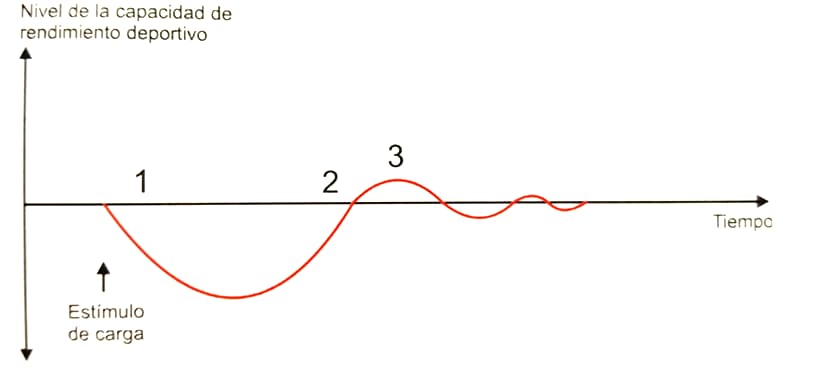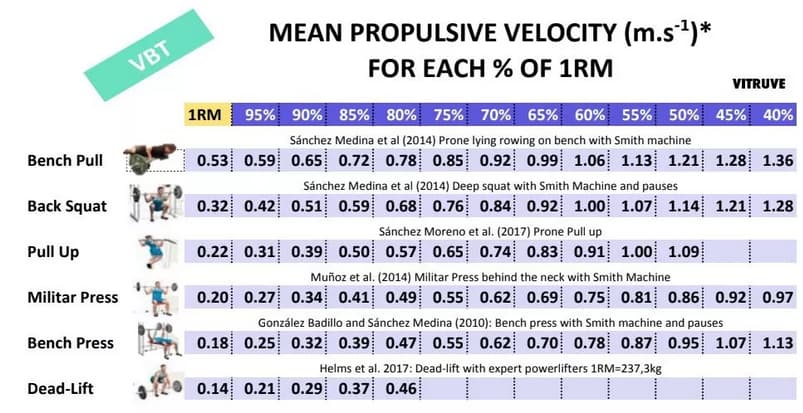17 de November de 2021
Plan Your Training for The Best Strength With VBT
For some time now, velocity-based training has been making its way into the new paradigm of the world of sports training and fitness. It is increasingly common to see coaches or athletes with their own encoder in gyms, even so, it can be a slightly complicated tool to apply in the planning of your workouts if you have never been in contact with one of them.
Knowing how to apply this tool will allow you to plan your workouts in a much more efficient and effective way. If you’ve never heard of VBT, we recommend that before reading this article, you take a look at our Guide to Getting Started with VBT Training. If you already know how to apply VBT, but you still want more and want to know how to plan your workouts, keep reading!
Planning the basics
Normally, when we practice sports, we usually do it with a specific objective, we want to get from point A to point B. If we want to get the most out of our training, these must be previously planned, that is, they must have been organized and planned in relation to the specific particularities of the subject, keeping in mind the characteristics of the sports modality or proposed objectives. The training plan must always have a scientific backing on which to rely.
Planning will not only allow me to organize what is the path that I will follow until I reach my goal, but it will also allow me to evaluate if that process is taking me where I want or I have to modify certain aspects to reach my objectives in a more efficient way.
Before planning, we must know where we want to go, that is, have a very well-defined objective, but how can I do this? For a goal to be really clear and so we can reach it through training, it must be a SMART Objective (Specific, Mensurable, Achievable, Realistic and Temporalized)
The importance of training cycles
The elements that constitute the backbone of planning must be known perfectly. There are different ways to subdivide or limit our plans according to time in different cycles:
- Macrocycle: “Set of several months (mesocycles) and weeks (microcycles) that, constituting the basis of long-term cycles, follow each other respecting the rules of the long-term training process”. (Vasconcelos Raposo 2000). Normally, the time period of a full year is usually used as a training macrocycle.
- Mesocycle: “It is the training unit that brings together by affinity a certain number of microcycles that respond to a common orientation and objectives”. (Pascual Brumós & Gimeno Marco 1998). These mesocycles are usually 3 to 6 weeks, so in a year, you can have 10 to 12 mesocycles. This allows to orient the process according to the primordial objective of the period or stage.
- Microcycle: This unit is already beginning to be more specific and is considered a work cycle or set of sessions, which are carried out in a period of time between 4 and 10 days, usually 7 days and that are repeated during the different periods of the season varying in structure according to the intended objects.
Within micro cycles there are different types according to the objective of that precise moment.
- Adjustment: The goal of this type of microcycle is to prepare the athlete for the next phase of training. The load of this type of microcycle is usually medium. This type of microcycle is usually used among other times at the beginning of the season and also, sometimes, after sporting events.
- Load: It is the most generally used microcycle. It is the one that improves the condition of the athlete and varies depending on the time of the season and the intended objectives, with this type of microcycle the optimal training load is sought for the improvement of the athlete’s performance.
- Impact: In a Microcycle with an extreme load, it is a great demand on the athlete and therefore a greater process of subsequent supercompensation, however, for this to happen the recovery times must be well controlled. It is not convenient to use this type of microcycles in subjects without experience in training.
- Recovery: Through this type of microcycle, the recovery of the athlete is sought either after a training load or a competition. Low training volumes are usually used for this and sometimes external help techniques are used to achieve it, such as massages, spas.

As we already know, thanks to the principle of progressive overload and the principle of supercompensation, there has to be a correct relationship between the loading and unloading of efforts. It makes no sense to be steadily increasing the load (micro load cycle) or even training with an extreme load (impact microcycle) without performing a recovery period.

With this information we can already form the main and synthetic structure of our planning. How long do I count during the microcycle?, How will I perform the recoveries? How will I structure mesocycles?
Improve your sessions thanks to Vitruve
From here, we enter into the planning of the training sessions. Each session will be oriented to concrete compliance. The session itself can be subdivided into 3 very different parts:
- Warm-up: whatever the mission of the session, it must have a general warm-up. It must include cardiovascular exercises and generalized stretching and then perform a more specific warm-up to the main exercise, that is, the realization of several series with light weights of the group that we are going to train. As for stretching, it is important to note that passive stretching is totally discouraged if we are going to perform strength training later.
- Main part: it is the training fragment where you will accumulate the effective series and repetitions that will bring us closer to our objectives.
- Final part or cooling: like the warm-up, it will be influenced by the muscle group that we have worked on in the session.
It is true that no matter how well we have programmed the mesocycles and microcycles, if we have done it through our 1RM test that we did 3 weeks ago, we may not be able to complete the session as we have written on the paper. This is because the 1RM varies every day due to multiple factors such as not having rested well, having eaten something worse that day, stress, etc.
If in our session we have a linear encoder like Vitruve, we can be much more effective when planning the session itself since thanks to knowing the speed of our surveys, we can know what real percentage of intensity we are working and have a constant control, session by session, of how your progress is evolving.
Imagine for example that we are in an impact microcycle because the second week of the mesocycle touched that according to our planning. With the device that Vitruve offers, we will be able to know if we are really training at the intensity we have programmed or not.

We have to keep in mind that it is not necessary to always move high % relative load (1RM) to promote greater strength gains. The important thing is to know with what type of loads you want to improve the most, following the principle of specificity.
As an addition, another advantage offered by focusing on velocity with a Vitruve encoder is the immediate auditory feedback you can get from the application, you can maintain maximum concentration in each lift.
This offers an added bonus to the training itself since wanting to beat your own record will make you, totally unconsciously, want to lift faster than the previous time.
Thanks to training with an encoder, we can control both the intensity by the speed of the first repetition of the effective series, and the training volume by the loss of intraseries speed.
Without a doubt, training with an encoder can be a total change and a leap in level in your training plan.
Bibliography
- Balsalobre Fernández, C.,&Jiménez Reyes,P. (2014). Strength Training: new methodological perspectives.
- González-Badillo, J. J., & Sánchez-Medina, L. (2010). Movement velocity as a measure of loading intensity in resistance training. International journal of sports medicine, 31(5), 347–352. https://doi.org/10.1055/s-0030-1248333
- Izquierdo, M., Ibañez, J., González-Badillo, J. J., Häkkinen, K., Ratamess, N. A., Kraemer, W. J., French, D. N., Eslava, J., Altadill, A., Asiain, X., & Gorostiaga, E. M. (2006). Differential effects of strength training leading to failure versus not to failure on hormonal responses, strength, and muscle power gains. Journal of applied physiology (Bethesda, Md. : 1985), 100(5), 1647–1656. https://doi.org/10.1152/japplphysiol.01400.2005
- Pedro J. Benito Peinado. (2020). Advanced concepts of training withloads, volumen I.

